Evidence of important events in Bali history can still be found throughout the island. Many monuments have been created in memory of fierce battles while other temple complexes show signs of influences from many kingdoms in the past.
The history of Bali can be divided in the following periods:
- First Inhabitants
- ±The Ancient Period (± 800 -1343 AD)
- The Middle Period (± 1343 – 1846 AD)
- The Modern period (± 1846 – today)
- Tourism development in Bali
The first signs of the Balinese Inhabitants
The oldest artefacts ever found in Bali were in Simbaran, a village located in the northern part of the island.
The tools were stone axes and adzes which indicate that the early Balinese inhabitants had arrived during the Ice Age around half a million years ago.
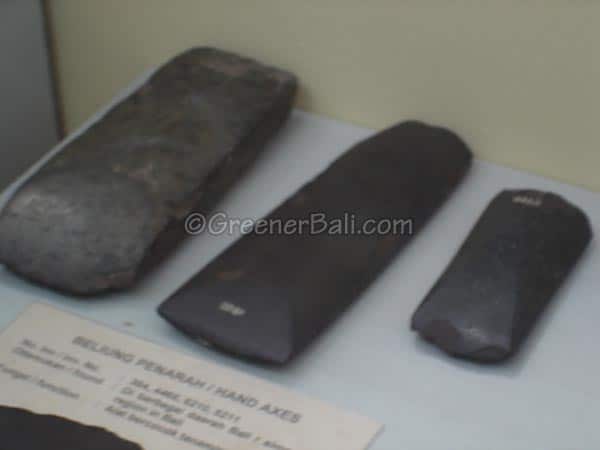
It is believed that the first Balinese inhabitants migrated from China and other parts of South East Asia, that were at that time connected with Bali by land bridges. Their main livelihood consisted of hunting and food gathering.
These ancient artefacts are now housed in the beautiful Balinese pavilions of the Museum Negeri Propinsi Bali (Bali Museum) in the center of Denpasar.
Definitely worth a visit when you happen to be in the neighbourhood.
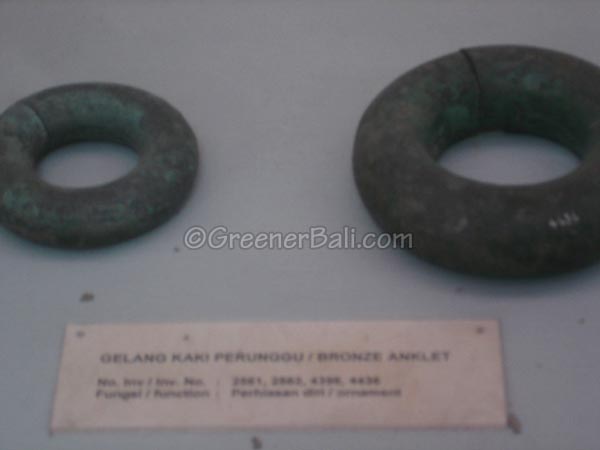
Other more sophisticated stone tools used for agricultural and pottery purposes have been found in Cekik, near Gilimanuk. These tools are considered to be 3000 years old.
In this time hunting was not the main source of food anymore. People started to clear forests and jungle in order to create the first settlements and start cultivation.
Other artefacts found indicate that the Bronze Era in Bali started around 300 BC. During this period of time the Balinese developed their skills considerably. They started to make metal objects such as weapons, home tools and jewellery.
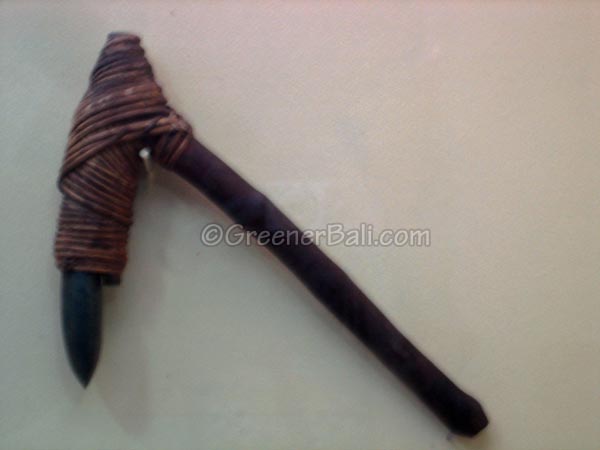
Past and recent (beginning of 2009 in Gianyar) discoveries of sarcophagi dated from this period of time show that the Balinese were animism who worship their ancestors.
Today these ancient remains can also be admired at the Bali Museum in Denpasar and the Museum Arkeologi in Pejeng near Ubud Bali.
Moon of Penjeng
Another important and probably most impressive artefact preserved from the Bronze Era is the largest drum ever found in South East Asia.
This drum, called the Moon of Pejeng is about 2 meter wide and is kept at the Pura Penataran Asih Temple in Pejeng.
Not only is this artefact considered sacred for the Balinese today, but it is believed that it was once used during the early rice cultivation rituals. Right here in Pejeng area where the complex rice irrigation system first evolved.
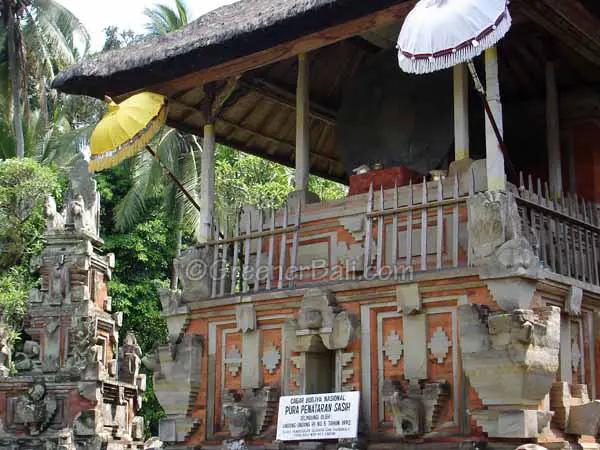
The Ancient Period (±800-1343 AD)
Based on the first writings found in the Bali it becomes clear that the Javanese had a great influence on Bali. The writings that are dated back until 800AD are written in ancient Javanese and were found on clay tablets and inscriptions carved on stone.
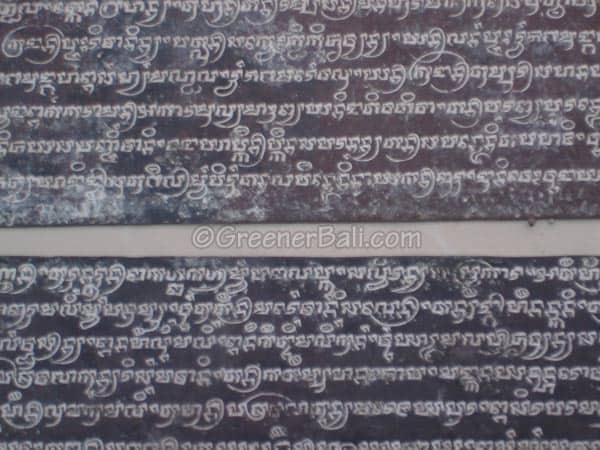
Deep connections between Java and Bali
From the writings and inscriptions one has discovered that in this period a dynasty ruled over Bali. Additionally it showed that the Hindu and Buddhist religion had reached Bali.
Today the historical inscriptions can be seen on the tombs at Gunung Kawi in Tampaksering, just north of Ubud surrounded by a stunning setting of rice fields, swaying palm trees and an idyllic river.
Especially the inscriptions of the rock-cut Gunung Kawi tombs tell us the connection between the royalty of Java and Bali.
The mystery of Gunung Kawi
Little is known for certain about this pre-Hindu temple complex. However it is believed that the five temples or shrines found at Gunung Kawi are built for the Balinese king Udayana, his Javanese Queen Mahendradatta and their sons Airlangga, Anak Wungsu and Marakata.
Airlangga was the king of Java, while Anak Wungsu was the king who ruled in Bali for the longest period of time indicating that Bali had experienced a peaceful time without much turbulence and wars.
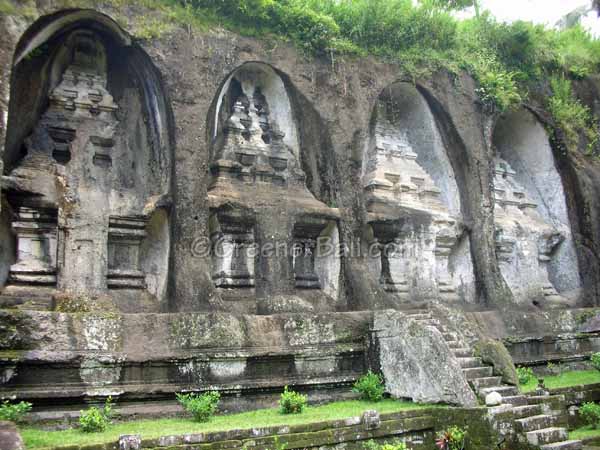
Another theory states that the shrines in Gunung Kawi are tombs belonging to Anak Wungsu and his favourite wives. Whichever theory is correct, archaeologists have never found any evidence of human remains buried here.
All temples or shrines have false doors indicating that they were used for ceremonial purposes only.
Today Gunung Kawi is considered a very religious site. Other temple complexes built in this period and which can still be visited today are the scenic Elephant Cave temple of Goa Gajah and peaceful Hindu site of the Yeh Pulu Temple.
The Middle Period(±1343-1846 AD)
Indonesia has always seen a lot of trade with foreigners because of the abundance in spices. Traders from India came to Indonesia and brought with them their Hindu religion, which in turn influenced the mighty Majapahit Kingdom of Java.
The Majapahit ruled over the whole of South-East Asia and it also led to the fall of the ancient Balinese kingdom.
At this time various traditions and rituals were adopted and used in Balinese society. This was the golden era for religious life and many Hindu temples throughout Bali were built.
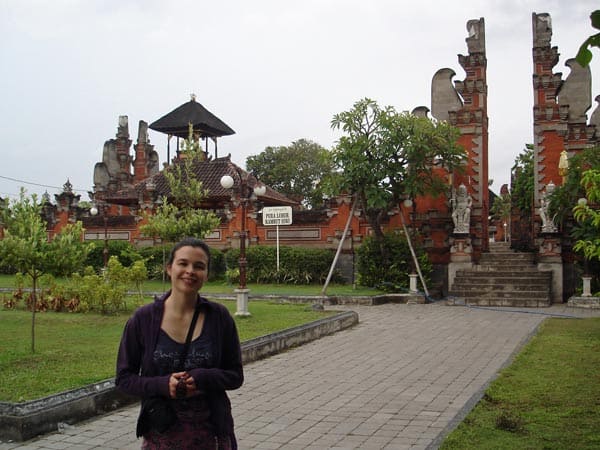
The fall of the Majapahit
With the increase of the Islam in Java the Majapahit Kingdom collapsed in 1520. Hindu priests, noblemen and artists fled from Java to Bali.
With them they took their cultural and Hindu believes to Bali where they could further develop it without any resistance.
The first ruler of the Majapahit in Bali was Sri Dalem Kapakisan who introduced the caste system. The Balinese who resisted the new rules of this kingdom established their own villages.
The Bali Aga
Today these villages and their people still exist and are called Bali Aga, meaning ‘original Balinese’. They have been on the island before the migration of the Hindu-Javanese who fled from Java to Bali.

The Bali Aga people live a very isolated life. They hardly interact with the other Balinese. The culture and language have remained unchanged throughout history and are different compared to other communities on the island. The most accessible Bali Aga village is Tenganan located near Candidasa in the Karangasem regency.
Especially the Javanese priests Nirartha and Astapaka had great influence on the development of holy places and temples on the island. Once they had fled from Java to Bali they left their traces making Balinese society what it is today with numerous festivals, offerings and ceremonies.

The temples created by the priest Nirartha are the most photographed temple of Bali, ‘Tanah Lot’ and the amazing cliff temple called the ‘Pura Luhur Ulu Watu’ temple. These temples are part of the 5 sea temples dedicated to the gods who guard the sea.
The Modern Period (±1846-today)
This is the period of trade relations between the Balinese Kings and the Dutch colonial government in Batavia (now Jakarta).
Colonists in Bali
In the beginning of the colonial times the Dutch did not immediately set out to take control over Bali, unlike other Indonesian islands. Instead they occasionally conducted expeditions and became enchanted with the beauty of the island and its people.
Trade was also quite unattractive for the Dutch because of Bali’s coastline which is full with dangerous reefs and therefore difficult to approach by ship.
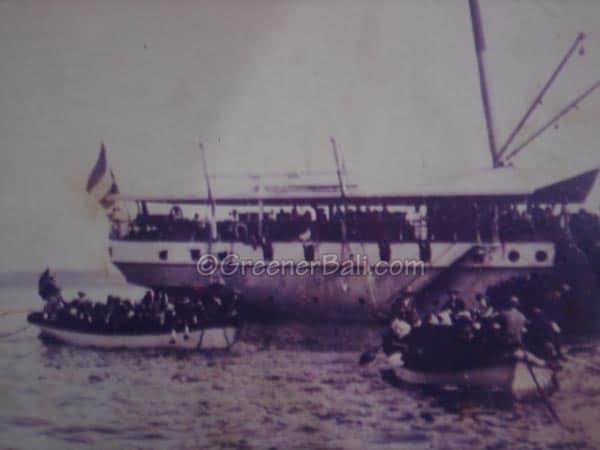
On top of that Bali was considered a small island which was unsuitable for plantations, unlike Sumatra and Java.
However there was a trade in Balinese slaves and soldiers who were transported to other Indonesian islands.
Slaves who were eventually freed started to settle in Batavia, now called Jakarta. Today an old city quarter in Jakarta called Kampung Bali reminds of the Balinese slaves who have settled here.
The Dutch take control
Only from 1846 a war started to take place between the Dutch and the Balinese kingdoms.
The Buleleng regency in the northern part of Bali was the first to be under control of the Dutch Government and from then on the Dutch started to have a say in Bali making
Singaraja their Capital.
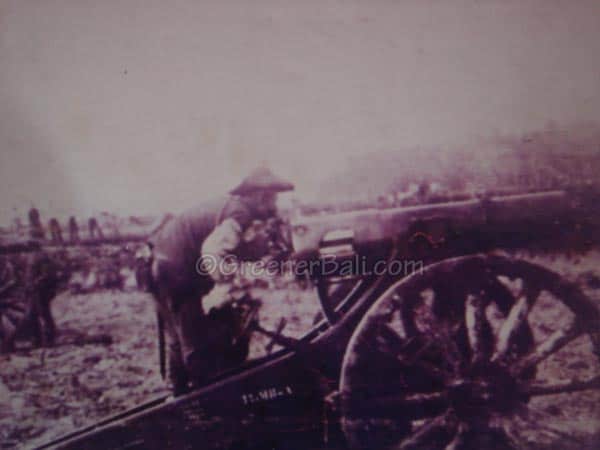
The kings were able to prevent the transfer of colonial soldiers to the island though, but other than that they received autonomy in which the Balinese government had to justify all the actions towards the few Dutch who settled in Bali to watch over the island.
However the attitude from the Dutch towards Bali changed when General Van Heutsz became the State Governor of the Dutch East Indies.
He had managed to take over power in the Aceh province in Sumatra, where Acehnese men and women had fought fierce battles against the Dutch.
The aim of the newly appointed State Governor was to further increase the prosperity of the eastern islands of Indonesia under the rule of the Dutch. Because Bali still had many independent kingdoms this island was particularly a high priority for him.
The only thing that was left for him was to wait for a justified reason to invade Bali and to fully colonise it.

The Puputan Wars
When a ship wrecked just off shore of Sanur in 1908 it was ransacked by the Balinese and all the men on board were murdered. Now the Dutch had their justified reason and immediately sent their soldiers.
Despite their heavy armour the Dutch were faced with a tough battle. It took them 30 days to reach Denpasar loosing a lot of men. Armed with only knives and spears the Balinese knew what their fate would be.
Nevertheless, the Balinese faced the Dutch preferring to die fighting than to surrender.
This lead to four famous battles in history, known as the ‘puputan wars’. A puputan is a fight until death with suicide by kris (Balinese dagger) in the end to save ones honour.
Women, children and elderly preferred to commit suicide than to surrender and live in occupied land or in exile. In 1908 Bali was officially a colony of the Dutch.
The first massive puputan happened in Singaraja in 1846, the second puputan in Denpasar in 1906 and the third puputan in Klungkung in 1908 ending in Dutch
victory.
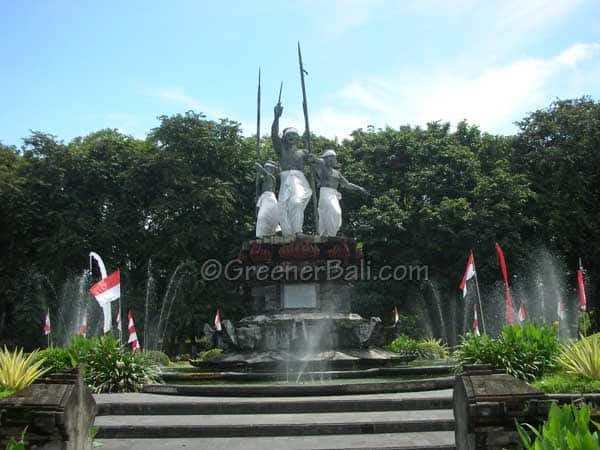
Under the governance of the Dutch things in Bali started to change very quickly. The Roman alphabet and Malay language were introduced in schools.
Telecommunication, modern transport, equipment and the Christian calendar became part of everyday life.
The Dutch took fine art and museums very seriously and build for example a library in Singaraja and the Museum Negeri Propinsi Bali in Denpasar.
Independence
In February 1942 the Japanese occupied Bali without any resistance from the Dutch who fled to Australia. At the end of the war Mohammed Hatta and Ahmed Soekarno declared independence on 17th August 1945.
Despite the declaration of independence the Dutch wanted their colony back but not without a fight against the 100 men resistance group of Gusti Ngurah Rai at Marga village, which led to the last puputan on the island.
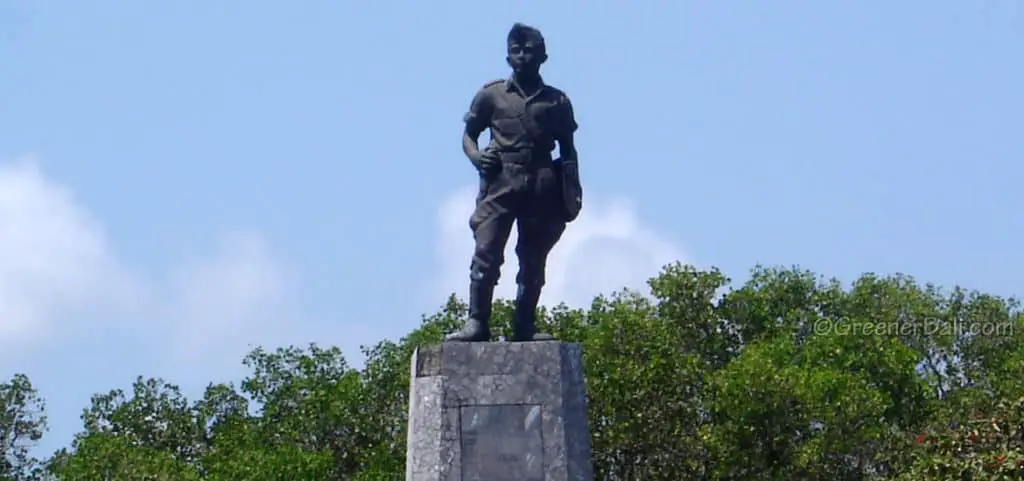
Under pressure of the United States the Dutch finally recognised (against their will ) Indonesia’s independence in 1949.
First signs of a holiday destination
Bali from then on became a province of the Republic of Indonesia. Bali immediately became a favourite retreat for the president at that time, President Soekarno.
Not only did he receive important officials here, but he also built a new international airport in Tuban to attract tourists. On top of that, with the Japanese war funds President Sukarno built the Grand Bali Beach Hotel in Sanur.
Not only will you be able to see this rather outdated hotel at Sanur beach but you can also see another drastic thing President Soekarno managed to create. To make the picture even more beautiful he turned the volcanic black beach of Sanur into golden sand.
Another legacy is a somewhat ugly palace (we definitely don’t have the same taste) right next to the Tirta Empul temple complex. At first I thought it was a water reservoir but later learned what it actually was.
Soekarno’s mother was from Bali, so maybe that has also influenced his choice of spending a lot of time here.
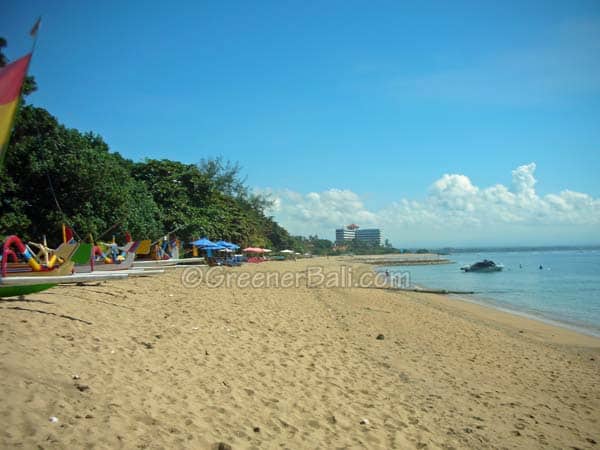
During his presidency Soekarno became more anti-western and Indonesia started to become more isolated from the rest of the world.
Military coup
When in 1965 a military coup took place the communists were blamed for it. This had drastic consequences, not only in Indonesia but also on Bali.
Like Java, the Balinese turned against anybody who was considered a communist. This led to another mass killing: 50.000 to 100.000 Balinese were killed when Bali only had a population of 2 million people.
When Suharto became president in 1967 Indonesia became open to foreign affairs again.
When traveling through Bali it is hard to believe that such a peaceful island has faced so much violence in the past.
Gunung Agung Eruption
Besides these dramatic events the Balinese had to cope with natural disasters as well. In 1963 the mighty Gunung Agung in East Bali erupted.
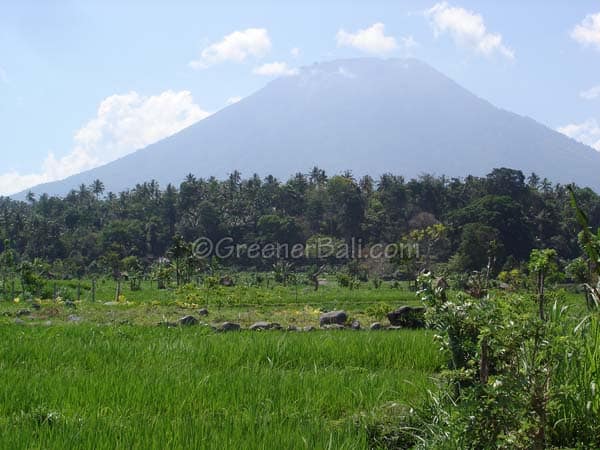
This natural disaster not only killed thousands of people but it also led to people transmigrating to other parts of Indonesia because their lands were not suitable for agriculture any longer.
Ironically the debris from the erupted Gunung Agung was used to build hotels and guest houses during the tourism boom at the end of the 1960’s.
Moreover the land had become fertile again and was transformed into one of the most amazing rice field sceneries on Bali.
Tourism development
In 1924 the Royal Packet Navigation Company had established a weekly steamship route between Bali and Batavia (now Jakarta), Singapore, Semarang, Surabaya and Makassar. In that first year the number of visitors were 213.
Four years later, in 1928 the first hotel was built in Denpasar called Bali Hotel. Today this hotel still exists but holds a different name, the Inna Bali Hotel.
With more ferries being launched and the establishment of an airport in Tuban, more tourists were discovering Bali. In 1930 several thousands travellers were visiting the island.
At that time you had to be pretty rich to be able to afford a trip to Bali. Mainly noble men, royalty or rich artists visited the island and some even settled in Bali.
Especially artists such as Walter Spies and the anthropologists Miguel Covarrubias had created an image of Bali as a paradise. From then on people from all over the world were eager to see this exceptional place.
In 1937 the first hostel in Ubud was built. It mainly attracted artists and was located exactly on the spot where you can find Hotel Tjampuan today.
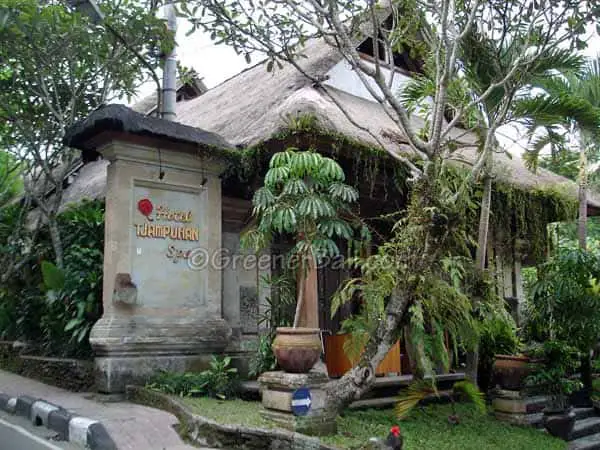
Kuta becomes a surfing destination
In 1936 Kuta started to receive its first travellers. K’tut Tantri, a woman from Hollywood left for Bali after being inspired by the film called ‘Bali the Last Paradise’.
Once on the island she, together with Robert and Louise Koke built the first hotel in Kuta called Kuta Beach hotel. The hotel was a success immediately and attracted many of the first Kuta travellers.
Robert Koke had already surfed in Hawaii before he ended up in Bali. He is the one who introduced surfing to Bali. From then on Kuta has always been one of the places to be for surfers.
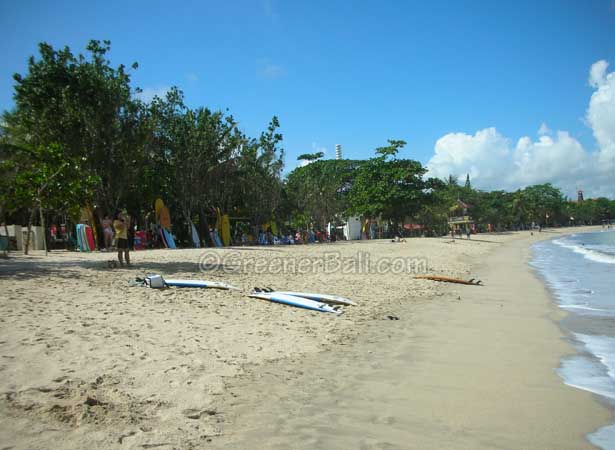
The tourism development came to a halt after the invasion of the Japanese during World War II. But, as mentioned before once Sukarno became president he aimed at investing more into tourism of Bali.
Later President Suharto also saw the potential of Bali and continued to promote the island worldwide. Foreign investors and even international aid organisations provided funding to fuel the tourism boost.
Bali Bombing
Visitors from all over the world were enjoying the beautiful island of Bali until in 2002 two bombs were detonated at two nightclubs in Kuta and 202 people died. And again in 2005 an other attack took place in Jimbaran where 20 were killed.
A memorial has been built on the location of the 2002 attack to commemorate the victims of the bombing.
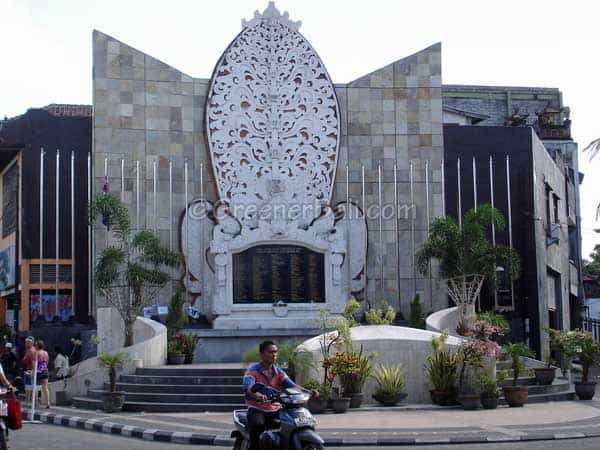
In the years after the attacks hardly any tourists visited the island and many Balinese were struggling to make a living. Many hotels became deserted and were in badly need of maintenance and renovation.
In some areas such as in Lovina you would almost be chased down by people who were hoping to earn some money from you.
Current struggles
Over the years Bali has recovered. Tourism is now booming again. Visitors from all over the world are arriving in the millions. This of course has led to other problems that Bali needs to solve as soon as possible.
The large number of tourists and the uncontrolled tourist development in certain parts of the island has led to an increase of waste, water and traffic problems.

